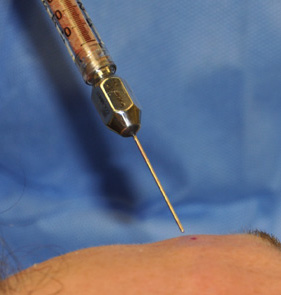
In the August 2014 issue of the Journal of Plastic, Reconstructive and Aesthetic Surgery, a paper appeared entitled ‘Improvement of Facial Scar Appearance and Microcirculation by Autologous Lipofilling’. In this study over a four year period, 35 facial scars on 26 patients were treated by fat injections. The scars were assessed before and after treatment by photo documentation, laser dopper spectrometry, tissue oxygen saturation, hemoglobin levels and microcirculation at various periods over the first three months after surgery.
All fat-injected scars show visible improvement with high patient satisfaction. They showed improvements in reduced pain, better color, less stiffness, and improved pliability. Microcirculation was initially reduced but returned to normal at the end of the study period. This study demonstrates that fat injections have a useful in extensive or complicated facial scars.
The use of fat injections for scar treatment is a natural and logical extension of its use in other areas of reconstructive surgery. This would not be for many simple and uncomplicated cars that can be treated by conventional scar therapies such as excision and laser resurfacing. Its use would be for very difficult scars such as in burns, those that cross joints with established contracture and problematic scars that have failed to show improvement with other treatments. Its use would be particularly helpful in atrophic scars where the tissues are very thin.
Despite the popularity of fat injections, the actual mechanisms that produce tissue improvement are incompletely understood. It is presumed that the combination of growth factors and stem cells mixed in with the fat are what is responsible for its remodeling effects and improved tissue quality.
Dr. Barry Eppley
Indianapolis, Indiana


